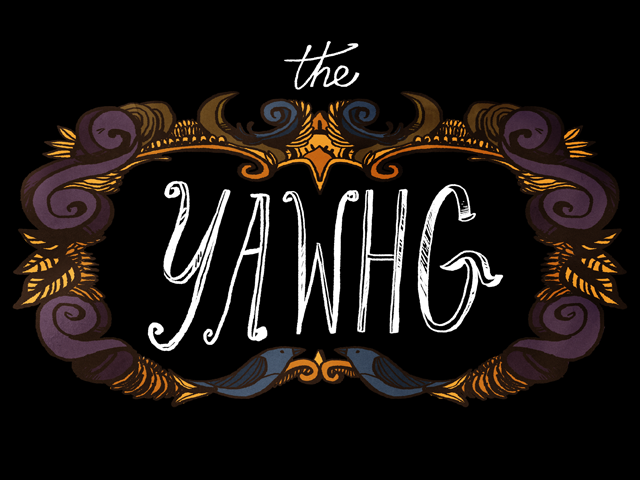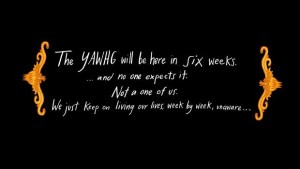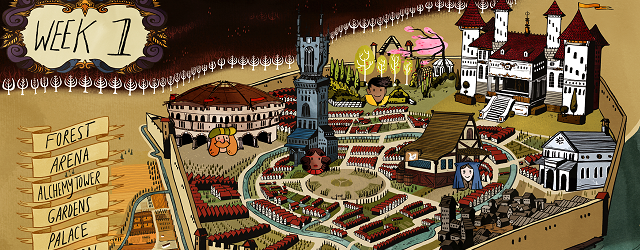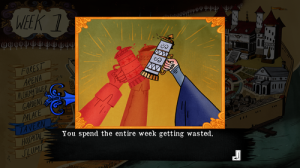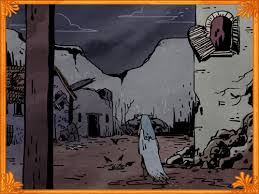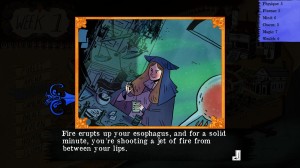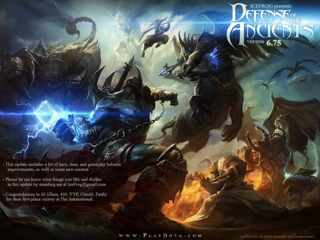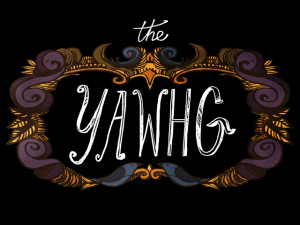 In six weeks, The Yawhg will destroy everything.
In six weeks, The Yawhg will destroy everything.
This is the first thing you learn when starting up the rather bizarre and sadly overlooked gem The Yawhg. The titular cataclysm will sweep your pleasant if somewhat unnerving hand-drawn city off the board in six weeks. Your job is to prepare for when The Yawhg finally gets to the city. What it is is never described, but it’s bad. You can at least be sure it’s bad.
The game The Yawhg, however, is a gorgeous, brilliant thing whose seams rarely show. Its relatively-short playing time combined with a huge replay value and simple controls mean it’s easy to pick up the game, but should take you at least four or five playthroughs to get all the content out of it (sometimes more). There are still things I haven’t uncovered after the ten or so times I played through the game for this review alone. What I have uncovered is that this game is well worth the price, and possibly a little more. But how good? And what is this game? Well, read on…
From the outset, you can be forgiven for thinking the mechanics in The Yawhg are a little sparse. They are. You choose from a menu of locations in your home city, then select choices from text menus, usually with context-appropriate illustrations. Each week, all the characters in play have one action to do whatever they like. But with each choice, with each location, with each random event or perhaps not as random event, the city and indeed the game start to unfold. In one game, my character became a vampire crime-fighter from hanging out in the slums most of the time. In another, a character got a magical disease that caused them to destroy a tavern in its final stages, and caused them to die in a magical explosion.
And all of this is, of course, leading up to the ultimate consequence. I’ll spoil this much: You cannot stop the Yawhg. It will always show up, and it will always destroy your city. No, you’ll never hear what it is, you’ll just know it was terrible. After that sixth turn, the city is gone.
Except.
Except the game doesn’t end with the destruction of the city. Because your character(s), you see, are still very much alive. And it’s their job to either rebuild the city and shepherd its new course, to start over again. Or, they can decide rebuilding is for squares, get drunk, and steal everything that isn’t nailed down. It’s another choice you can make, one governed by the choices you’ve made in the previous six turns. The variety of endings is staggering, as the game analyzes your choices and gives you an epilogue based on what you did, what position you had during the rebuild, and what places you visited the most.
But I think where the game really shines isn’t just in the gameplay (which is excellent), but also in the graphics. As I mentioned earlier, the graphics are either hand-drawn, or done in a hand-drawn style. The four main characters are color-coded (Yellow, red, green, and blue) and even if the differences are purely aesthetic, effort was put into making each character look unique, from their movements to their appearance to their style of dress.
The city map is, as far as hub screens go, incredibly detailed and even though it’s a static image (what little movement there is happens between weeks as the screen gets darker and foggier, or when areas get destroyed), the whole thing feels alive. Like there are people there. There’s also a sense of mystery to it. The forest is dark and far on the edge of the map, the slums are a patch near the docks that is colored a very suitable Realistic Brown ™ , and the slightly sketchy, woodcut-like style of the art helps to add to the atmosphere. Overall, it goes a long way towards immersion.
The music is also superb. While it doesn’t go outside a few ambient tracks, growing darker and more tonal as the doom advances and the screen grows darker and foggier, it does a great job of preserving that atmosphere. When it gets to the final week in the game, the music cuts out entirely, leaving only the wind and a few other noises as the picture shows the aftermath of the dreaded Yawhg. For a game in which atmosphere is a huge part, The Yawhg manages to do a staggering amount with about four tracks total. (Prologue/Epilogue, three map screen tracks, ambient apocalypse noises.)
And the writing is something to be praised, as well. For a game that mainly communicates through text, the writing is the most important part of the game. This is something a lot of modern games and even modern Interactive Fiction games (especially Twine games) seriously skimp on. Instead, a lot of them believe they can rely on a lot of clever gimmicks, static visuals, and the pretense of being socially-conscious. Thankfully, The Yawhg does none of this. The writing, while not particularly evocative, is paired well with the visuals, and even has a sense of humor in certain sections that helps carry the whole enterprise admirably. (My favorite being the text for drinking at the tavern, “You spend the entire week getting wasted.”)
And yet, when paired with the atmosphere, the writing takes on an edge as things go on. While it could be happy revels one week, another makes it seem like you’re drinking your impending doom away. The music and visuals dictate, and since the whole thing gets darker week by week, then it only stands to reason that some of the funnier passages turn kind of mean-funny as the game goes on and you get closer and closer to your eventual inevitable doom. Passages like “You go to bed having lost a little more faith in your fellow human beings” start to carry more weight. A sudden attack of leeches from a well in the slums seems more like a harbinger of things to come than an event that you can blame on whatever idiot was in the hospital when the event came up. When the “Good End” screen comes up, it’s almost a relief, and when the “Bad End” screen comes up, it’s just as crushing.
But there are some definite patches that start to wear a little. For instance, I’ve played four-handed games where three people contributed to the relief effort and one person decided to become a looter. Despite the three people who picked the “good” choice getting high results and helping with the rebuilding effort, there was still a bad end when the selfish pickpocketing werewolf decided to become a looter, leading everyone to their bad end (The werewolf still had a good end, as they spent their time rampaging through the forest eating people.) Also, while the controls are probably fairly clear, having gone into the game blind with no instructions, it took me a while to realize that “Shift” was the “back out of menus” key, and “ESC”’s only function was to quit the game entire. Also, after running through a number of times, I felt like the random events were interesting, but that they were also a bit frustrating, as I’d know exactly what stat I needed to get the result I wanted, but either didn’t have it yet or would spend my turns avoiding the area where the event took place because I wanted the right stats built up.
The stat buildup creates another problem with The Yawhg, one that begins to show after the first full playthrough. To get the good end, you see, the characters need a certain level of stats and skills. This forces the player to re-visit locations or try to build up good stat combos to get the ending they want, or utterly tank the characters if they want to see the bad ending. Once you figure out the underlying mechanics, it becomes harder to play through the end knowing how the game is supposed to work. Similarly, if you spend time maxing stuff out, then it becomes frustrating during the times when maybe you didn’t spend enough time, and wind up with the “rebuild” ending. The version I played also had a bug that I only encountered at the end of two consecutive playthroughs, where despite not spending any time in the tavern and getting the “Good End”, one of the characters I played wound up playing the “Bad End” dialogue for the Town Drunk– their ending on the previous playthrough.
But…in the end, The Yawhg isn’t about getting the happy ending. It’s about finding a story, about exploring the events of the city before its collapse, and at the close, it’s about finding hope in the face of an inevitable circumstance. Few games allow you to create a narrative for your character the way The Yawhg does, and few games give the same vibrant variety and immersive atmosphere that you get from The Yawhg. That it’s been kind of overlooked (despite being a critical darling on some sites, talking about it is met with the customary “What?! Who?!” looks that usually come with me bringing up something much more obscure) makes me rage just a little bit more, because it deserves at least some attention, if maybe not the undivided attention of the populace. It did something cool. So buy this game. Buy it for yourself. Buy it for your friends. Buy it for your enemies as a peace offering. But you will regret very little of the time you spend on it, and the design team (four people! Literally four people designed this game!) deserves recognition for, if not coming up with a classic (and I do think it’s a classic), at least something interesting, something that no one else has really done.
And for that, they deserve respect.
The Yawhg by Damian Sommer and Emily Carroll with music by Ryan Roth and Halina Heron is available on Steam for the price of 9.99. Further information can be found at the website.

